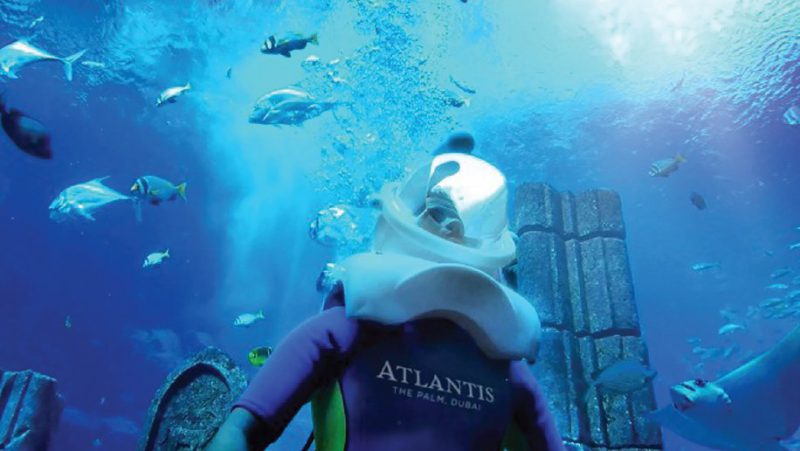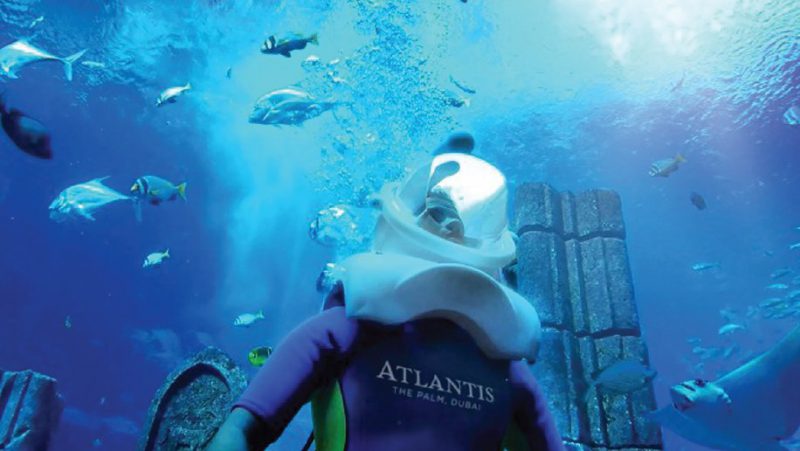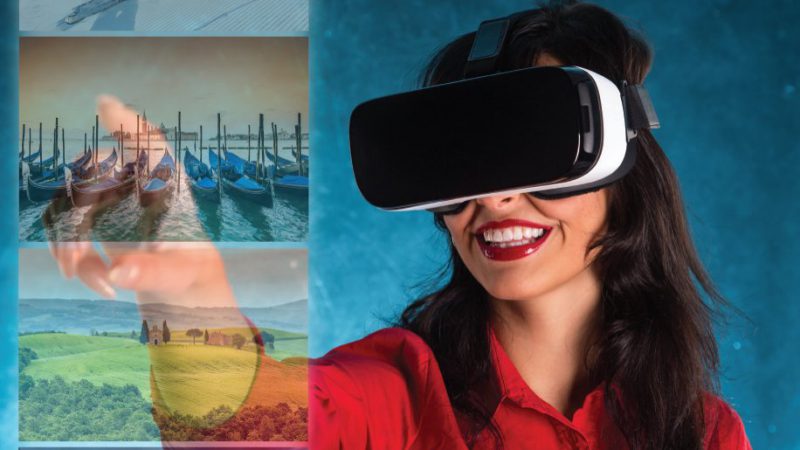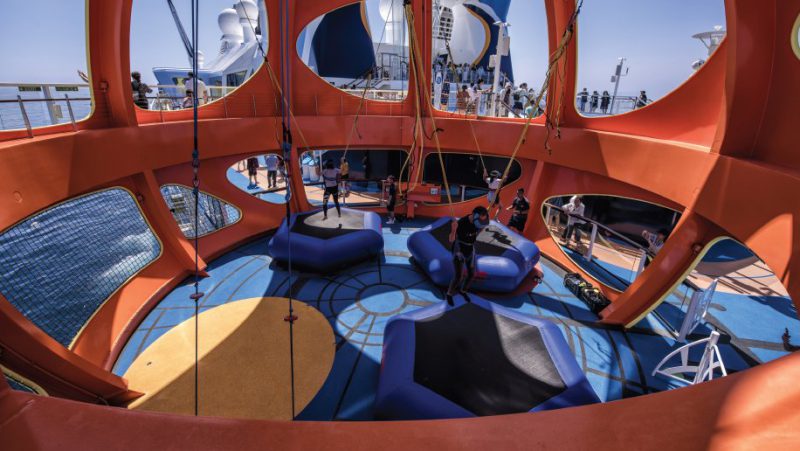Virtual Inspiration
As the reality of the pandemic shutdown sets in, technology can take travelers on a different kind of journey
September 29, 2020

The time-tested truism, “Necessity is the mother of invention,” was never more apropos than in the midst of today’s coronavirus pandemic. Health measures have required people to show only half the reality of their faces, to keep a six-foot perimeter of safety, and mostly to settle for a mere facsimile of real life, especially in terms of travel.
The pandemic crippled the travel industry, but also gave rise to a new form of adventure and exploration – virtual reality. The pandemic did not usher in VR technology. In fact, many companies and industry leaders were using virtual reality as soon as it became available and applicable to travel. For instance, Royal Caribbean’s Spectrum of the Seas offers Sky Pad, a virtual reality bungee trampoline experience where guests can wear VR headsets and choose between three immersive games – Jump Rally, Sugar Leap and Bass Bouncer.
Royal Caribbean’s chairman and CEO Richard Fain, in an interview with the AListDaily, said, “Everyone having a phone or some type of connected device today allows the cruise experience to become integrated into the Internet of Things.” These words were made into reality during the marketing campaign of 2018 where the company recreated the on-ship experience at the immense Duggal Greenhouse at the Brooklyn Navy Yard in Brooklyn, NY, to illustrate how new technology is changing the entire cruise experience.
The virtual experience/media event foreshadowed the world we know today. Ahead of its time, Royal Caribbean demonstrated how facial recognition and cell phone location monitoring helps get travelers safely on board and supervises them once the anchor is weighed. Though it would have ruined the fictional Titanic romance of Jack and Rose, the technology increases accountability and passenger safety. A yellow dot on the captain’s control panel represents each passenger, as long as he or she is armed with his or her cellphone.
Where No One Has Gone Before
One company with its finger on the pulse of the virtual experience is Travel World VR. John Graham, president of the company, is enhancing the service by “taking pre-existing content from people who already have 360 degree video, and putting on our app for free.” According to Graham, VR preserves certain more fragile travel sites such as the Faroe Islands and Machu Picchu. Travel World VR uses both virtual and augmented reality to offer not only leisure but also education.
Likewise, hotels and destinations have been using VR technology for some time as marketing tools, offering prospective customers and clients virtual tours prior to the sale. For example, prior to a life-changing journey to Dubai, Atlantis The Palm offers a VR tour that starts at the luxurious entrance, moving through the grand lobby with pillars in a palm tree design and running fountains, and culminating in the Royal Bridge Suite which boasts three bedrooms, high ceilings, library, media and game room, and a dining room fit for 16 people. Best of all is the 360 degree view of the Arabian Sea and the Dubai skyline.

Other features of this high impact destination are Dolphin Bay, Adventure Waterpark and the Royal Pool. The virtual walkthrough of this property is certainly impressive, but is unquestionably just a glimpse of what is possible while physically standing amidst the opulence.
Zoom In
Virtual Reality, prior to the pandemic, was at the confluence of game-like novelty and high tech marketing. Media personnel and eager travel customers alike donned the VR headset to experience that “next best thing” sensation. Travel shows were among the many events where a person can sit in a swivel chair in the middle of an exhibit hall, and be transported through sights, sounds and movement to exotic destinations, their reality suspended for a few altered minutes.
Then, just as 2020 was getting underway, coronavirus shut the doors to reality. The latest forecast prepared for the US Travel Association by Tourism Economics projects that through the end of 2020, the travel industry could lose $505 billion dollars, and may not recover until 2024. Some countries closed their borders and many travelers canceled their plans.
Major events got canceled, such as The New York Times Travel Show, scheduled for late January 2021. During 2020, the Jacob Javitz Center, the usual site for the Travel Show, was used as a makeshift hospital for COVID-19 patients. Other events got postponed, such as World Expo 2020 in Dubai, which was moved up by one year. In reaction to the “virtual” shutdown of the industry, the virtual world acted as a surrogate, a panacea for people’s natural sense of wanderlust.
The necessary adjustment of the industry gave birth to a plethora of virtual events. One such is the Global Virtual Travel Expo, hosted by luxuryalive.com. Like many other events, this expo features webinars, exhibit halls, keynote speakers, and the opportunity for exhibitors to schedule virtual meetings with eager customers. The event will span three weeks in January 2021. Likewise, Spa Industry Association offers an on-going series of seminars on many aspects of the spa, beauty and wellness industry. These and many others have shifted to distance tourism as a means toward recovery as the industry moves into the new normal.
Zoom has seen its usage increase exponentially. In the world of travel, the platform has allowed business partners and potential customers to stay within reach of each other. Meetings could be scheduled without having to send representatives to foreign locations, plan hotel stays and pay for three-martini lunches. Casual attire was more acceptable, and even fake backdrops depicting famous landmarks were an extra perk.
However there was a learning curve, and Zoom mishaps became fodder for satire on shows such as Saturday Night Live, and in creative commercials for companies such as Progressive Insurance. Despite the embarrassing on-camera moments that have undoubtedly gone viral, Zoom and other web-meeting platforms were the preemptive way for people to still feel connected and even laugh a bit through a tragic and challenging time.
Like most reactions to tragedy, there is a fulcrum, a double-edged sword cutting and protecting simultaneously. In-person experiences offer all five senses at once, place the traveler outside of the familiar, and create a thrill with the true spirit of exploration. But especially in times like these, we need to appreciate the value – and the availability – of virtual reality. Even after we get back to real reality, it’s likely we will see the virtual experience broaden to include more interactive travel experiences.
It is sort of like a fun babysitter; while we wait for normal to return, it’s pretty entertaining and certainly novel.





